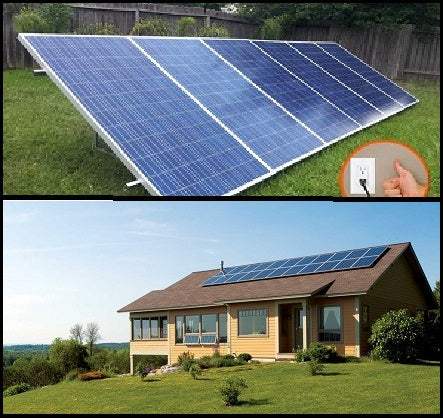Scott Tenhunen
New User
- Location
- San Diego, CA
- Occupation
- Electrician
I have been digging and trying to find some information on weather the NEC (Not the Utility company) would have an issue with the following proposed PV system being used:
Here is the scenario, you are a tenant in an apartment complex on the top floor. With the permission of the building owner/landlord you are allowed to put in place a temporary PV system on the roof.
The system consists of the following:
4X 410W panels (1640W Total)
1 grid-tied micro inverter that is equipped with rapid shutdown (anti-islanding)
A racking system that is NOT attached to the roof of the building (is resting on it via rubber Durablocks)
Most importantly it is connected to the tenants power via a 240V 20A cord and plug connection in the attic
Assuming the cord is rated for UV exposure and everything on the roof is wet location rated.
The 240V 20A receptacle in the attic is dedicated and specifically installed for this purpose by the building owner/landlord. The breaker in the units panel is marked accordingly.
I see there are similar products like what I am describing but they all seem to connect at any normal 120V outlet which could cause the circuit to be overloaded without tripping the breaker. Like the one linked below that claims to produce 3000W at 120V. Connecting that to a standard 15A outlet would allow 40A of electricity to flow before the breaker tripped.

The system I am imagining is connected to a dedicated, and properly labeled, breaker in the panel. I don't have my code book on me as I am on vacation at the moment but had this thought. I am sure the Utility company would have issue with this type of install which is why I am excluding them from this thread. Is there any code violation here? I am not well versed in the PV side unfortunately. With this being essentially an outdoor rated cord-and-plug connected piece of equipment does the NEC even govern it? What makes the linked 3000W system above OK to be used and not the system I described?
Here is the scenario, you are a tenant in an apartment complex on the top floor. With the permission of the building owner/landlord you are allowed to put in place a temporary PV system on the roof.
The system consists of the following:
4X 410W panels (1640W Total)
1 grid-tied micro inverter that is equipped with rapid shutdown (anti-islanding)
A racking system that is NOT attached to the roof of the building (is resting on it via rubber Durablocks)
Most importantly it is connected to the tenants power via a 240V 20A cord and plug connection in the attic
Assuming the cord is rated for UV exposure and everything on the roof is wet location rated.
The 240V 20A receptacle in the attic is dedicated and specifically installed for this purpose by the building owner/landlord. The breaker in the units panel is marked accordingly.
I see there are similar products like what I am describing but they all seem to connect at any normal 120V outlet which could cause the circuit to be overloaded without tripping the breaker. Like the one linked below that claims to produce 3000W at 120V. Connecting that to a standard 15A outlet would allow 40A of electricity to flow before the breaker tripped.

PluggedSolar 1500/1800/3000 Watts (1.5/1.8/3.0 KW) Solar Grid Tie Kit
Product Features: PluggedSolar 1.5/1.8/3.0 KW Solar Grid Tie Kit makes the sun power within the reach of every homeowner. It's patent (pending) technology makes solar installation very easy. Anyone can add solar panel and can simply plug the system into an existing electrical outlet...
pluggedsolar.com
The system I am imagining is connected to a dedicated, and properly labeled, breaker in the panel. I don't have my code book on me as I am on vacation at the moment but had this thought. I am sure the Utility company would have issue with this type of install which is why I am excluding them from this thread. Is there any code violation here? I am not well versed in the PV side unfortunately. With this being essentially an outdoor rated cord-and-plug connected piece of equipment does the NEC even govern it? What makes the linked 3000W system above OK to be used and not the system I described?
